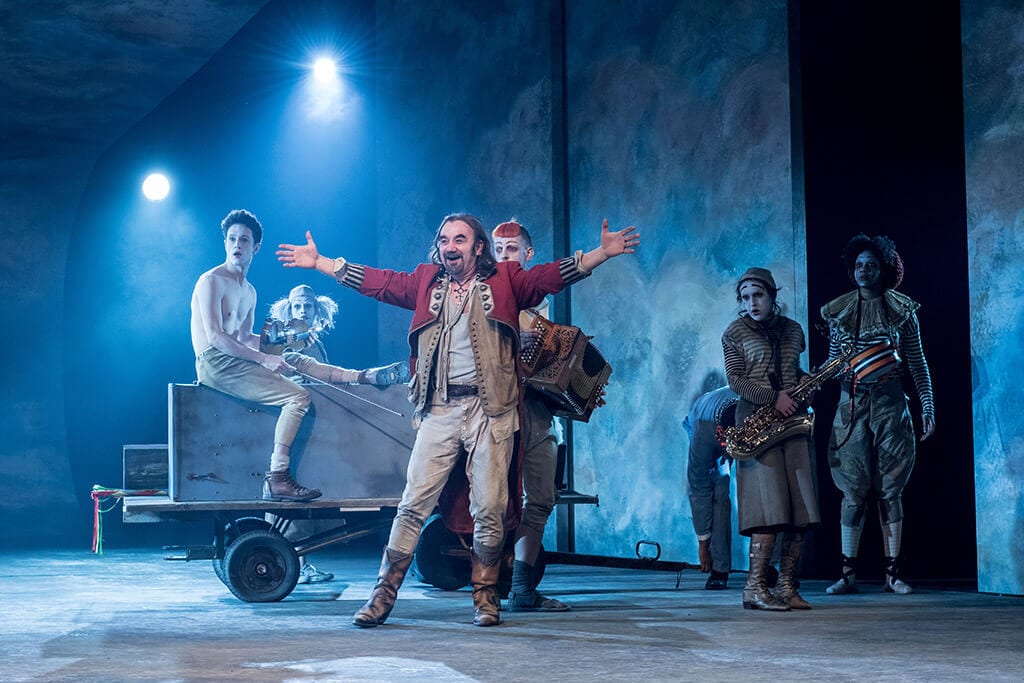Rosencrantz and Guildenstern are dead, announces the First Ambassador in Hamlet. The demise of Rosencrantz and Guildenstern is overlooked amidst the bloodbath and body count in the final act of Hamlet, but Tom Stoppard’s 1966 play turns Shakespeare’s story inside out and propels these minor characters to the centre-stage while the protagonist Hamlet becomes a background character.
In Hamlet, the King tasks courtiers Rosencrantz and Guildenstern, Hamlet’s childhood friends, to discover the reasons behind Hamlet’s erratic behaviour and melancholic moods. However, most of their scenes are off-stage and Stoppard’s play fleshes out these fleeting characters as they stumble around trying to understand the events happening around them.
Daniel Radcliffe is Rosencrantz, the gentle and earnest one of the duo who is happy to take a relaxed, more contemplative view of things. Contrasting yet balancing this performance is Joshua McGuire who brings buoyancy to Guildenstern, the fast-paced, constant worrier who tries to take control of their situation. The two have an explosive dynamic on-stage as they participate in a quick-fire game of Questions and play with language. There is a running gag that the two are interchangeable and perfect synchronisation of Radcliffe and McGuire makes it hard to remember who is who.
Interrupting Rosencrantz and Guildenstern’s endless game of Heads or Tails is David Haig’s Player and his flamboyantly dressed theatre troupe, who then continue to burst in sporadically and perform shows of gore, dark humour and death. The players act as the conduit between Shakespeare’s original text and Stoppard’s alternative play, enacting and parodying central scenes from Hamlet.
And yet, while Rosencrantz and Guildenstern are given centre-stage, they are still resigned to being the characters on the outskirts. Hamlet, Ophelia, Polonius and Gertrude weave in to enact fragments of scenes from the original play, which highlights the isolation of Rosencrantz and Guildenstern from the main action. A strong sense of loneliness emerges and the stage design, with the illusion of a pathway of endless clouds, heightens Rosencrantz and Guildenstern’s seclusion and thus makes the ending more tragic.
The play’s preoccupation with mortality, chance and the meaning of life could have weighed the play down, but this production successfully injects wit, humour and a strange charm that will make you wonder if you should be crying or laughing as the curtain falls.



